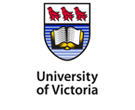Nature storytelling: The importance of binary opposites
| Title | Nature storytelling: The importance of binary opposites |
| Publication Type | Thesis |
| Year of Publication | 2000 |
| Authors | Foster A |
| Advisor | Quarter J |
| Academic Department | Education |
| Degree | Doctor of Education Ed.D. |
| Number of Pages | 306 |
| University | University of Toronto (Canada) |
| City | Toronto, ON |
| Accession Number | AAT NQ49807 |
| Abstract | The purpose of this study is to explore the effect of binary structuring in storytelling when used as a teaching strategy for adult environmental education. This investigation builds on curriculum theory where binary structuring is used to design curriculum for young children (Egan, 1986). A field test provides an experience that people are invited to participate in and comment upon.A number of major findings emerged from the study: (1) Participants recognize the change-event and associated binary opposites in an oral story; (2) Adult and children groups identify the same scene as representing the change-event and binary opposites in an oral story; (3) Curriculum for adult learning may be based on a story structured on binary opposites; (4) Participants are able to express the meaning of a story in words, drama form and in artwork.Many of the findings from this study support the existing story/curriculum literature for young children. The findings may extend this theory into the realm of adult education. The research supports Egans (1986) work while offering suggestions for researching how people find meaning that has not previously been reported in the literature. For example, using tableau as a way of determining what a story means is a new technique. Some of the data has been collected using a quantitative method, a procedure not previously employed on this topic.This study validates adult educators who use stories in their practice. It may encourage adult educators to research further uses of stories in adult education. |
| URL | http://proquest.umi.com/pqdweb?did=732059591Fmt=6clientId=12520RQT=309VName=PQD |


 The Social Economy Student Network
The Social Economy Student Network


